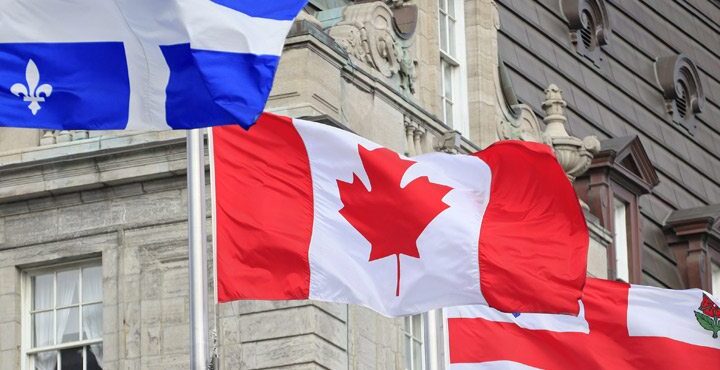Your Canadian tax return serves both federal and provincial levels. Most of the time, it’s pretty simple. You complete your tax return based on your province of residence on December 31 of the tax year. Each province has its own taxes and credits administered through your federal return by way of provincial forms. Provinces set tax rates, and while most offer similar credits, there are some credits or rebates individual to each.
Province of Residence
“While the December 31 rule covers most situations, there are some cases where the Canada Revenue Agency looks at other things when you split time between provinces,” says Kitchener, Ontario, accountant Jack Bloom. “Significant ties to a province include things such as your driver’s licence and vehicle registration, as well as in which province you’re registered for health care. If you claim residence to gain a province tax advantage, you may need to demonstrate these ties.”
Alberta’s Family Employment Tax Credit
Separate from the Canada Child Benefit, Alberta offers a non-taxable amount for lower income, working families with minor children. The Family Employment Tax Credit, which is fully funded by the Alberta government, pays up to $2,113 annually to qualifying residents. The province also allows you to carry forward any stock savings plan tax credit amounts unused in a tax year. Learn more here.
Mining and Logging in British Columbia
British Columbia’s provincial tax is progressive, from 5.06 percent in the first bracket rising to 16.8 percent on income over $153,900. Tax credits with a distinct regional flair include the logging tax credit and mining flow-through share tax credit. Employee share ownership plans and employee venture capital tax credits are two other provincial tax-saving opportunities. Learn more here.
Manitoba’s Community Development
Manitoba’s progressive taxes ranged from 10.8 percent on the first $32,670 of taxable income, rising to 17.4 percent for amounts over $70,610. Tax credits could be claimed on investments you made into eligible community enterprise development projects. The fitness amount covered children and young adults up to 25 years of age, including yourself. Learn more here.
Low-Income Tax Reduction in New Brunswick
Along with the other Atlantic provinces, New Brunswick has a low-income tax reduction credit, it also has a Residential Property Tax Credit, & a Home Energy Assistance Program (HEAP). Please see this page for more tax credits available.
The Resorts of Newfoundland
Newfoundland and Labrador’s progressive tax rates spread from 8.7 percent to 18.3 percent. The low-income tax reduction is also available. Taxpayers over the age of 19 who have invested in registered resort development property can claim a tax credit.
Northwest Territories and the Cost of Living
The Northwest Territories offers a cost-of-living tax credit, which is refundable. That is, if your credit is greater than the tax you owe, you receive a refund for the difference. Only one partner in a marriage or common-law relationship can claim the credit on behalf of your family.
Nova Scotia Age Tax Credit
In addition to the age amount, Nova Scotia also offers the Age Tax Credit for qualifying residents. Seniors aged 65 years or older who have less than $24,000 in taxable income, may claim an extra $1,000 credit to offset provincial tax amounts due.
Young Children Amount in Nunavut
Nunavut residents with children under the age of six may qualify for a provincial credit of $1,200 per child. Nunavut also offers a refundable cost-of-living tax credit, though with an added single-parent supplement over the Northwest Territories’ plan.
Ontario’s Trillium Benefit
As Canada’s most populous province, it’s not surprising that Ontario has a wide range of credits on offer. The Ontario Trillium Benefit gives low- and moderate-income taxpayers a break on their sales and property taxes, and gives residents of the northern part of the province a break on their energy costs. Businesses offering apprenticeships may be eligible for a tax credit, as are companies who employ post-secondary co-op students. Ontario even has tax reduction credit similar to the low-income reduction offered on the East Coast. Learn more on tax credits you can benefit from here.
Teachers in Prince Edward Island
Prince Edward Island recognizes the contribution that the personnel of early learning and child care centres make from their own pockets. Teachers and program staff can claim up to $500 for their own purchases of eligible school supplies. Along with the other maritime provinces, PEI offers a low income tax reduction including claims for children under 18.
Quebec’s Distinct look
As the only province that fully administers its own tax system, Quebec’s list of credits isn’t as familiar as other provinces. There are refundable credits for on-the-job training periods, respite of caregivers and for top-level athletes. Non-refundable credits are available to those over 65 living alone and for recent graduates working in remote resource regions. Please click here for a complete list of Revenu Quebec’s provincial credits.
Learn in Saskatchewan
Saskatchewan has a strong graduate retention program designed to encourage provincial residency through tuition refunds. Here is a complete list of tax credits that Saskatchewan has to offer.
Yukon Development
Yukon’s tax focus provincially is on development, with credits aimed at the growth of business and industry, investments in a labour-sponsored venture capital fund & expenditures toward research and development. Also, investing in small business in the territory also generates tax credits. Learn more here.
TurboTax has been serving Canadians since 1993. It is the #1 selling tax preparation software across the country. We have a variety of product options to serve every individual’s needs. Recently added a LIVE service to enable our customers to have access to tax experts at the tip of your fingers. Go ahead and give it a try! Easy to use with a choice of support options to assist you with all your taxation needs.
References & Resources
- Jack Bloom, Certified Public Accountant; Kitchener, Ontario
- Canada Revenue Agency: Your Province or Territory of Residence
- Canada Revenue Agency: Provincial and Territorial Tax and Credits for Individuals


